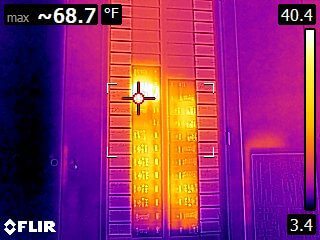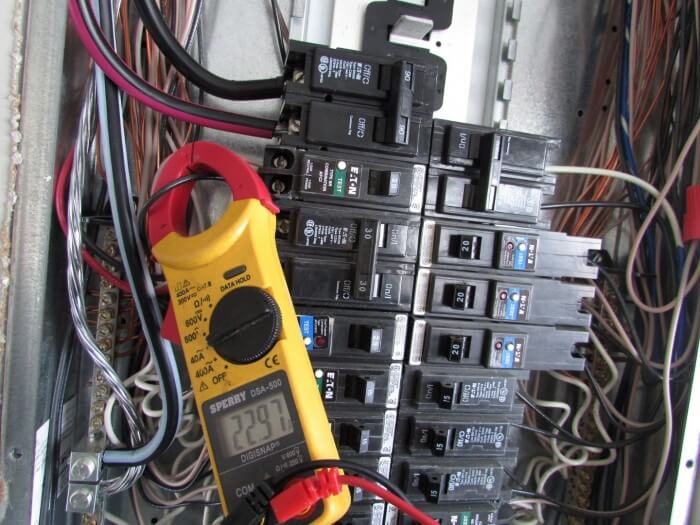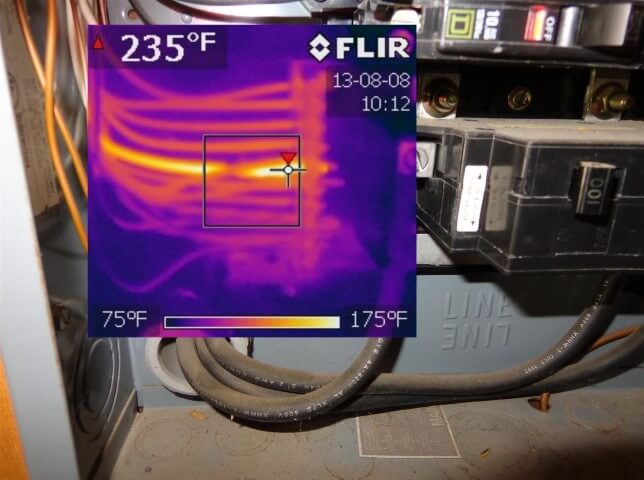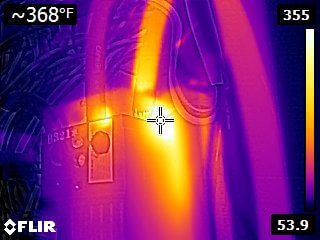We include infrared inspections along with our home inspection. We stopped charging extra for this service many years ago and simply incorporated it into our standard inspections because we find so much value in this inspection. One of the things we do with our infrared cameras is to scan the electric panel for hot spots. We do this after we’ve turned on everything built into the home that uses electricity to help determine if there are any overloaded circuits or overheated connections inside the main panel. With an infrared camera, all it takes is a quick scan of the panel to see if there are any hot spots.
If we do identify a hot spot in the panel, the next step is to figure out if it’s a problem or not. We’re usually not concerned with the exact temperature of the circuit breaker because it’s all relative. Even with no load on anything, arc-fault circuit breakers run a little warmer than anything else in the panel; that’s never an issue. When we run an electric oven and turn the stove-top burners on, the circuit breaker and wires always get hot. That’s not a problem, either. Usually, when I find a problem with a hot circuit, it’s the result of the circuit being overloaded.
For example, while inspecting this new construction home in the middle of winter, I found a circuit breaker significantly warmer than all the rest of the breakers.
My infrared camera showed the circuit breaker to be nearly 70° Fahrenheit, while the ambient temperature was close to 0° (in a garage)… but again, the exact temperature wasn’t important. The important question was whether or not this circuit was overloaded. To figure that out, I used my clamp meter to see how much current passed through the circuit breaker.
In this case, it was about 23 amps going through a 20-amp circuit breaker.
What’s allowable is a continuous load that is 80% of the circuit breaker’s rating. In other words, no more than 16 amps on a 20 amp breaker. Click here for more details on sizing a circuit breaker. This circuit was clearly overloaded. The fix was to have another circuit added.
In some cases, however, we find wires or circuit breakers so hot that we don’t even bother testing the amperage; we say it’s overheated and a fire hazard, so fix it. That generally applies to circuit breakers or wires over 140° Fahrenheit.
Update: UL 489 limits the allowable temperature rise above ambient to 90°F. You can find more information about this on the Schneider Electric website.
The images below show a couple of nice examples of this.
Aren’t infrared cameras great? I think they’re great.




